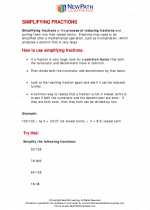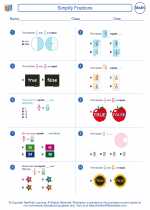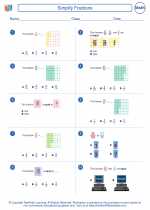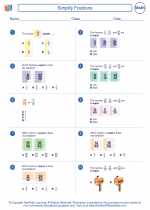Cubic Number Patterns
A cubic number, also known as a perfect cube, is a number that can be expressed as the product of an integer with itself, and then multiplied by itself again. The cube of a number n is denoted as n3. In other words, n3 = n * n * n.
Understanding Cubic Number Patterns
Cubic number patterns refer to the sequence of perfect cube numbers. For example, the sequence of perfect cubes starting from 1 is 1, 8, 27, 64, 125, and so on. These numbers exhibit a pattern that can be observed and analyzed.
Study Guide for Cubic Number Patterns
- Finding Cubes: Understand how to find the cube of a number by multiplying it by itself twice. For example, 23 = 2 * 2 * 2 = 8.
- Identifying Patterns: Practice identifying the patterns in the sequence of perfect cube numbers. Look for the differences between consecutive cubes to understand the pattern.
- Using Formulas: Learn the formula for finding the cube of a number and applying it to different values to observe the patterns.
- Real-life Examples: Explore real-life examples where cubic number patterns are found, such as in the volume of cubes or the number of small cubes in a larger cube.
- Problem Solving: Solve problems related to cubic number patterns to reinforce understanding and application of the concept.
By studying cubic number patterns, you can develop a deeper understanding of the properties of perfect cubes and how they form a sequence with identifiable patterns.
.◂Math Worksheets and Study Guides Sixth Grade. Simplify Fractions
Study Guide Simplify Fractions
Simplify Fractions  Worksheet/Answer key
Worksheet/Answer key Simplify Fractions
Simplify Fractions  Worksheet/Answer key
Worksheet/Answer key Simplify Fractions
Simplify Fractions  Worksheet/Answer key
Worksheet/Answer key Simplify Fractions
Simplify Fractions 

 Worksheet/Answer key
Worksheet/Answer key
 Worksheet/Answer key
Worksheet/Answer key
 Worksheet/Answer key
Worksheet/Answer key

Create And Print more Fractions worksheets with Simplifying Fractions
The resources above cover the following skills:
NUMBER SENSE
Know commonly used fractions (halves, thirds, fourths, fifths, eighths, tenths) and their decimal and percent equivalents. Convert between any two representations (fractions, decimals, percents) of positive rational numbers without the use of a calculator.